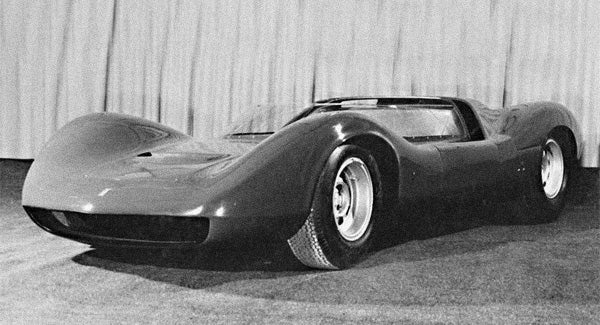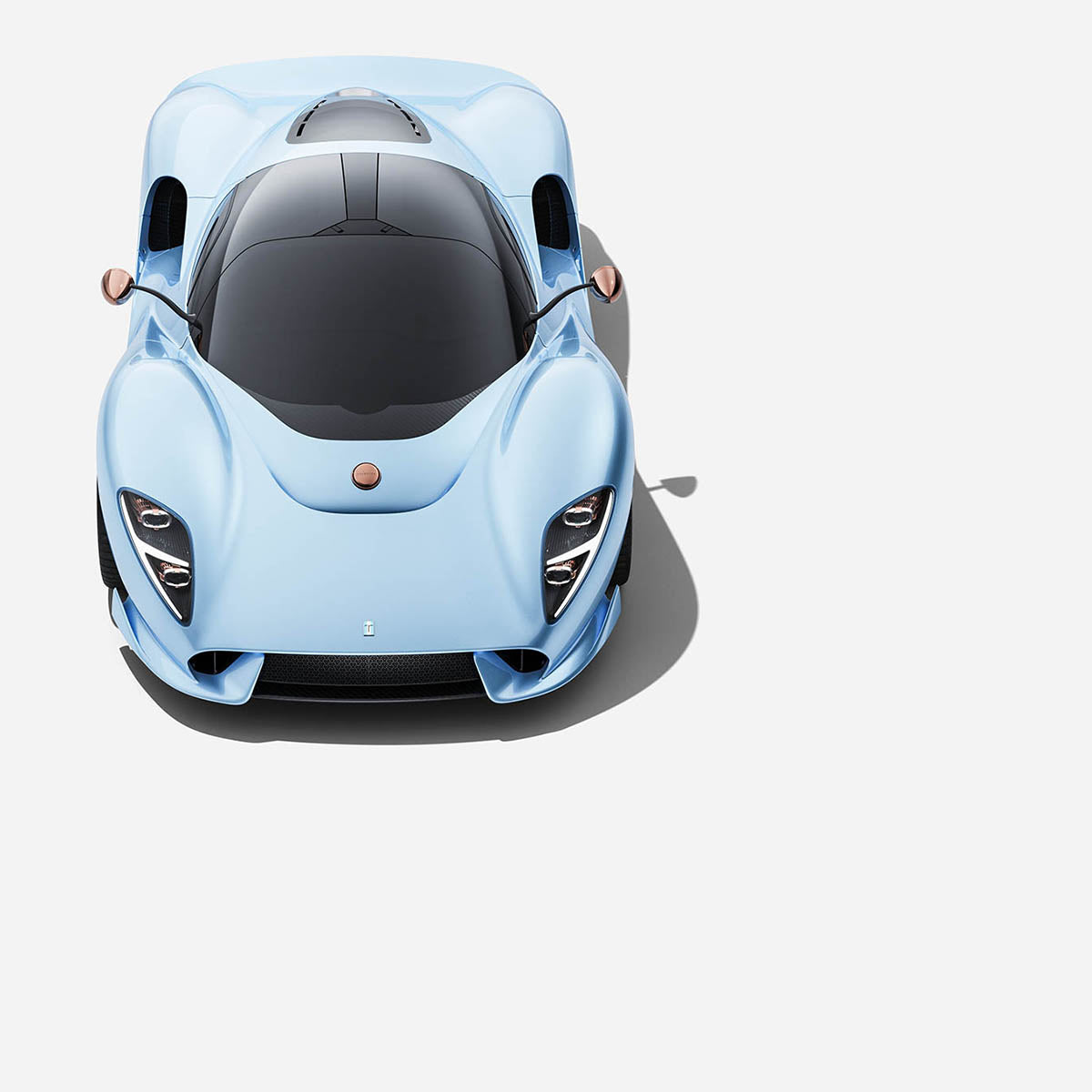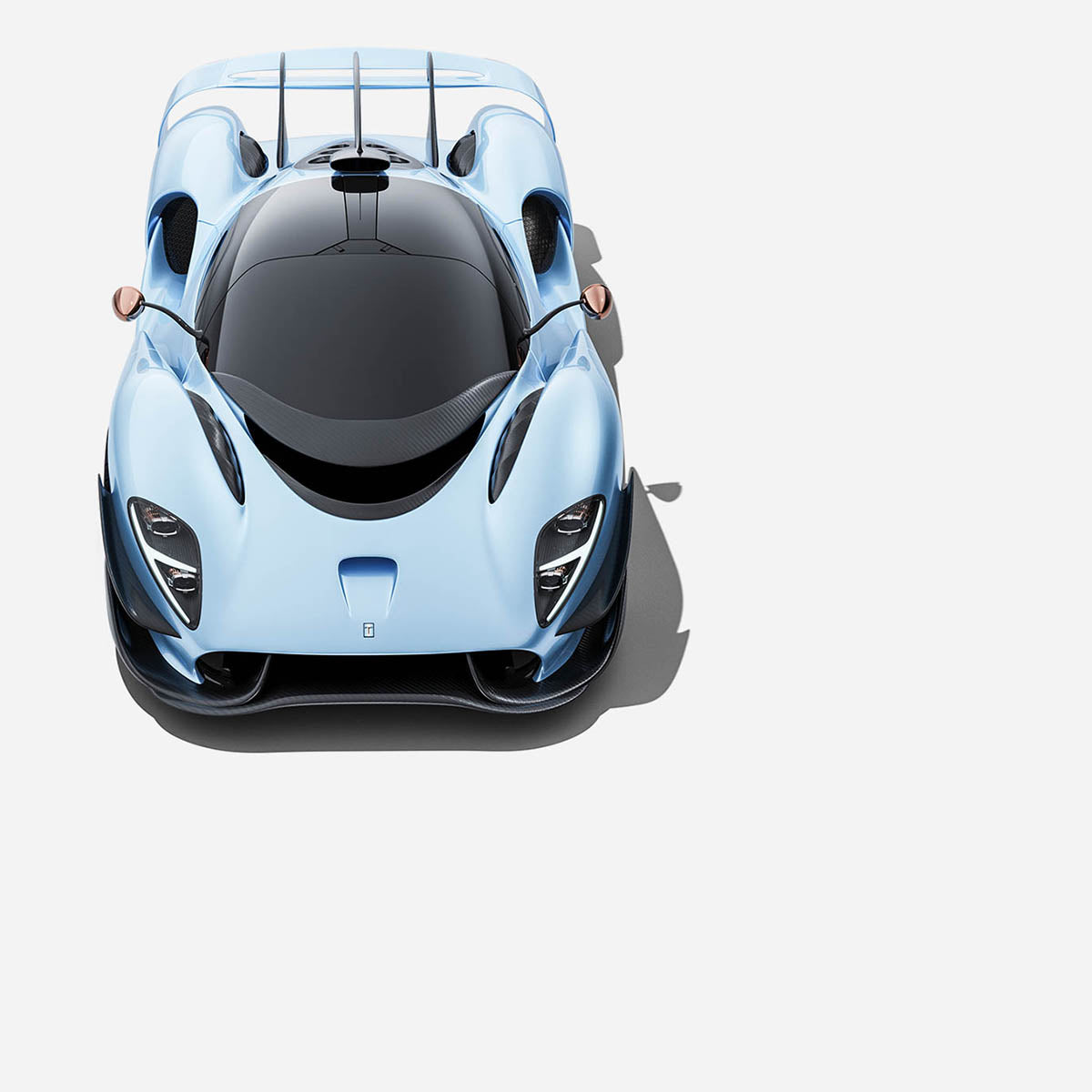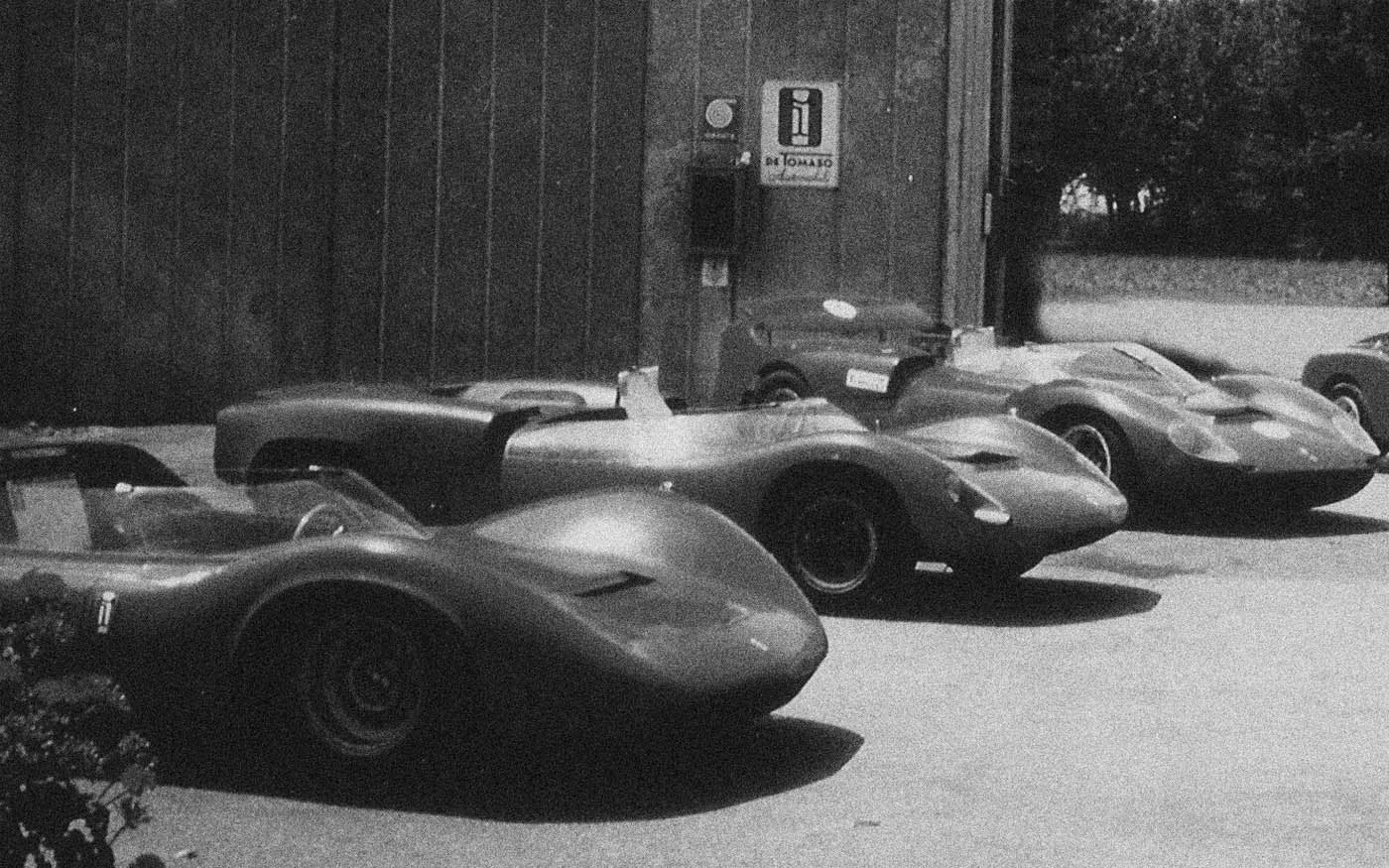
Sport Prototype
Sport 1000
Initially there were two prototypes created, with the first being the De Tomaso - Fantuzzi Sport 1000 BRM. Alejandro used the Sport 1000 prototype to tour Europe in a self-marketing campaign to try and spur interest in a new racing series. The Sport 1000 received its bodywork from the notable Italian coach builder, Fantuzzi.
The Sport 1000 featured a sleek and low-slung aluminum body provided by Fantuzzi overplayed onto Alejandro's signature backbone chassis. The suspension design consisted of double wishbones at the front and reversed lower wishbones, top links and twin trailing arms at the rear.

Sport Prototype
P70 / Sport 5000
In 1964, Carroll Shelby contacted Alejandro de Tomaso as he was looking for a replacement chassis for his 'King Cobras'. Timing would prove appropriate as at that time De Tomaso had a desire to enter a prototype sports car into US and European races.
Initial funding was secured by Shelby from Ford for the Cobra programme, and from that point on they collaborated on a mid-engined open sports car project, along with American designer Peter Brock.
Read more about the P70
Competizione
Sport 2000
The second of the two prototypes, the Competizione 2000, although starting in development before the P70, did not appear at the Turin Motor Show until 1966. Designed by Giorgetto Giugiaro, the Sport 2000 was a superleggera, the 2000 featured a sleek and low-slung design similar to that of the Vallelunga spider. A unique feature was its chassis which was comprised of titanium with the frame also serving as a fuel tank (capacity of 120 litres).
Its engine air intakes were on the sides of roll bar structure (the 5-litre had scoops in the rear flank.) The front radiator had a low air intake with two exhaust vents on the front lid. The vehicle-wide exhaust vent incorporated four rectangular barrels of which the outer ones housed the taillights and the inner ones, the exhaust pipes and there is a notable absence of an aerofoil.





